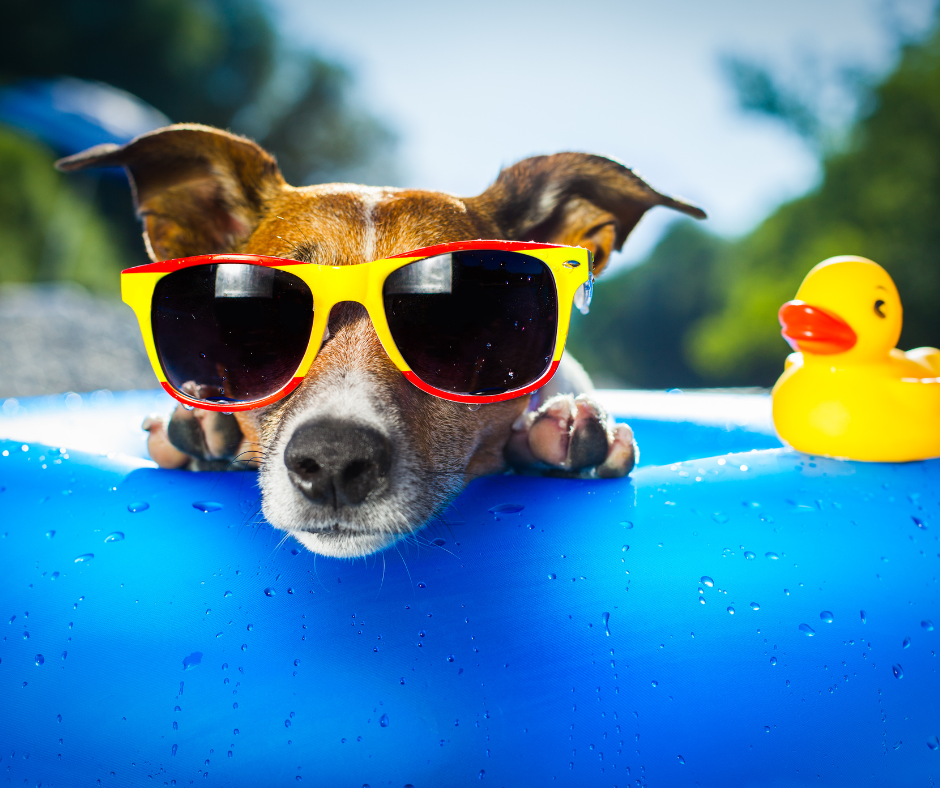Summertime is here, and it’s hot for you and your dog. Unfortunately, the heat can be deadly for humans and animals, including your dog. There are certain precautions we must take to protect our beloved dogs from the summer heat. Below, you will find a list of seven tips to help you and your pup navigate this hot summer while staying cool and making memories.
Summer heat, dogs, and asphalt/concrete roads
Asphalt and concrete have a higher heat capacity, meaning they retain heat easier and take longer to cool. On a day around 95F outside, the average temperature of the surrounding concrete or asphalt will be around 30-50F higher. Dogs’ paws aren’t built to protect from the high temperature of baking asphalt. If the concrete or asphalt is too hot for you, it’s too hot for them.
An excellent way to check is to place the back of your hand on the ground for at least 5 seconds. If it is too hot for you to do that, it is too hot for your dog to walk on. Instead, take your dog on a walk through the grass or wait till it cools down. Burns on the pads of your dogs’ paws are no fun for either of you, so it’s best to be safe.
Don’t leave your dog in a parked car
Leaving a dog in a parked car is deadly in the summer heat. A Stanford study shows that a parked car’s interior can heat up by almost 40F within an hour. For example, if the outside temp is 90F, within the hour, the interior of a parked car can rise and become 130F. Now that’s hot! Would you want to sit in a vehicle that is 130F? Of course not! And neither does your dog. Or your child, for that matter. Dogs don’t have thumbs, so they can’t open the door to escape the sweltering hot car.
Remember, your vehicle is like a greenhouse; the sun is warming air trapped underneath the glass. Also, cracking a window isn’t the solution. The only solution is not to leave your pets in the car.
Pools, beaches, and lakes with your dog
Pools and beaches are synonymous with summertime. Who doesn’t love playing in the water on a hot summer day? Don’t forget about dogs. Some dogs love the water as much as people do. However, there is a risk of water toxemia, also known as water poisoning, hyperhydration, or water intoxication. Excessive water intake usually occurs in dogs while swimming, diving, or water-retrieving. Some symptoms to look for when it comes to water intoxication include:
- vomiting
- bloating
- lethargy
- loss of coordination
- drooling
- glazed eyes
Water intoxication is not common, but it is something to be aware of, especially if your dog is playing in pools of water. If you suspect your dog is suffering from water toxemia, seek veterinary care immediately.
Summertime heat and walks with your dog
All dogs enjoy taking walks. There are smells to uncover and territories to explore. Summer temperatures, however, turn those enjoyable walks into sweat-filled dreadful treks. Therefore, the best time for walks during the summer heat is either early morning or evening walks once the sun sets and temperatures drop.
Outdoor activities during the summertime
Playing outside is an excellent way for your dog to burn off energy and get exercise. However, the summer heat can be deadly. Heat strokes can occur in pets. Dogs and cats can’t sweat like us to cool themselves down.
Also, they don’t have any layers of clothing to remove. Therefore, it is best to keep them inside during the hottest time of the day and schedule your outdoor activities for early morning or late evening when temperatures aren’t as sweltering hot.
Outside dogs and the summer heat
Some dogs stay outside all day. If your dog is one of those dogs that stay outside all the time, it is essential to consider the heat and ensure adequate shelter for your dog is available. Some things to think about include but are not limited to
- fresh, clean water
- shaded area
- circulation of air
Providing clean water is imperative. Several solutions offer clean water to your dog throughout the day, such as automatic water fountains.
Make sure there are plenty of shady areas for your dog to choose from as the sun moves throughout the day. You can purchase shaded dog beds from Amazon or other retail stores if you lack shady natural areas. Also, ensure that enclosures or beds are open to allow air circulation. A breeze under a dark spot on a hot day can make a massive difference for your dog.
Different dog breeds and the summer heat
Different dog breeds interact with the heat differently. For example, Chow Chows have thick coats and are more susceptible to heatstrokes than dogs with less fur. However, most of the dog breeds that are susceptible to heatstroke are the breeds that are brachycephalic (flat-faced). These breeds consist of your pugs, English bulldogs, French bulldogs, and other flat-faced dogs.
In addition, panting is essential to help cool down a dog, but a shortened muzzle makes it more difficult for a dog to breathe and pant. Lastly, it would be best if you also considered the age of any dog breed. Older dogs will have more difficulty with the heat than younger dogs.
The most important takeaway from this is to know that if it’s hot for you, it’s also hot for your dog. So keep your dogs cool and hydrated this summer, and enjoy the season!
